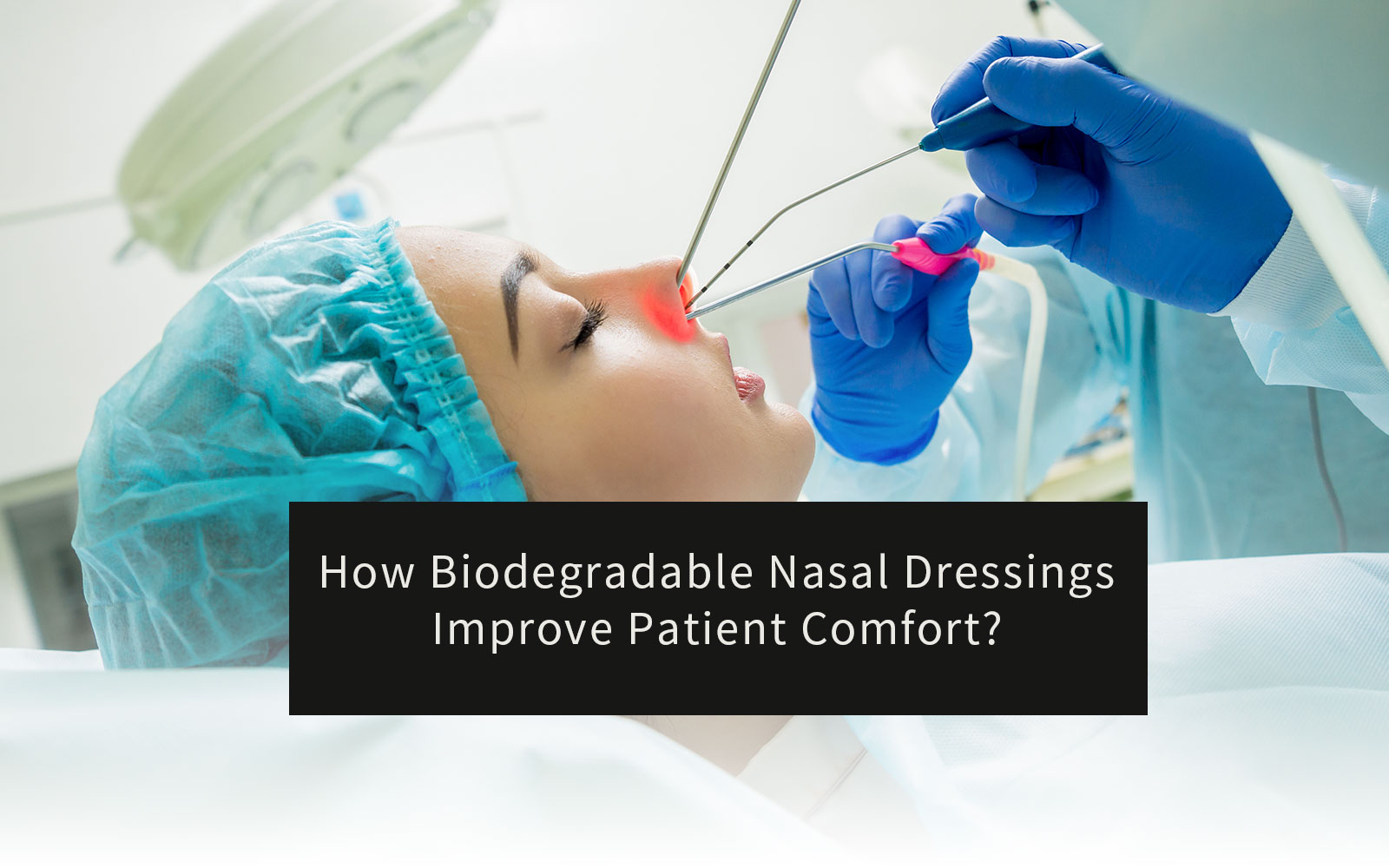Table of Contents
Why Is Chronic Rhinosinusitis Considered a Quality of Life Issue?
In the United States, approximately 16% of adults suffer from chronic sinusitis, a common inflammatory condition that negatively impacts their quality of life, causing persistent discomfort and functional impairment. Chronic rhinosinusitis (CRS) negatively impacts quality of life in several key ways:
- Persistent Symptoms: Constant nasal congestion, facial pain, and loss of smell disrupt daily activities.
- Sleep Issues: Nasal obstruction often leads to sleep disturbances, causing fatigue and reduced productivity.
- Medication Dependency: Long-term use of medication to manage symptoms may increase the risk of drug dependency and other health concerns.
What is the role of nasal dressings in Endoscopic Sinus Surgery?
For many, surgical intervention becomes necessary to relieve these symptoms. Post-surgery care, particularly through the use of nasal wound dressings, plays a crucial role in recovery, offering comfort and preventing complications.
- Control Postoperative Bleeding:
Nasal packing plays a crucial role in controlling postoperative bleeding after endoscopic sinus surgery. It helps to stabilize the surgical site and prevent excessive bleeding, which is one of its primary functions. - Promote Wound Healing:
Packing materials help to maintain stability in the operated area, aiding in the healing process by reducing mucosal damage. This promotes more efficient and effective wound healing. - Prevent Adhesion and Septal Lateralization:
Nasal packing also helps prevent the formation of adhesions inside the nasal cavity and prevents septal lateralization, which could interfere with proper nasal ventilation. By keeping the nasal cavity open, nasal packing ensures smooth postoperative breathing and better overall outcomes.
How Do Nasal Wound Dressings Affect Healing and Patient Satisfaction?
When evaluating the effectiveness of nasal dressings, the assessment typically focuses on four key criteria:
- Bleeding: Nasal dressing highly absorbent properties help control postoperative bleeding by quickly stabilizing blood levels and reducing the risk of rebleeding.
- Hemostasis: With dual hemostatic effects, Nasal dressing promotes faster coagulation through collagen’s ability to absorb fluids and enhance tissue regeneration, leading to a quicker recovery process.
- Adhesion: The anti-adhesion benefits of Nasal dressing are achieved by maintaining tissue separation and moisture, which are vital for normal nasal ventilation and preventing scar tissue formation.
- Infection: Nasal dressing’s antimicrobial properties further reduce infection risks, speeding up the wound healing process and enhancing overall patient outcomes.
What are the Key Factors for Improving Postoperative Comfort?
Material Composition: NasoAid leverages the power of Collagen and Carboxymethyl Cellulose (CMC) to enhance wound healing and tissue regeneration. Collagen, a vital protein naturally found in the body, acts as a bioactive scaffold that supports the regrowth of damaged tissue, speeding up the healing process. Its absorbent nature allows for rapid hemostasis, preventing excessive bleeding during the critical post-surgical phase. Meanwhile, CMC works synergistically with collagen by maintaining a moist wound environment, which is essential in preventing adhesions and promoting smoother, uninterrupted healing. This combination not only supports tissue repair but also ensures that the healing tissue remains hydrated, preventing irritation and discomfort for the patient.
Biodegradability: One of the most critical aspects of NasoAid is its fully biodegradable nature. The combination of collagen and CMC allows the dressing to naturally degrade within the body, eliminating the need for uncomfortable manual removal. This bioresorbable feature not only reduces patient discomfort but also lowers the risk of postoperative complications, such as infection or trauma caused by dressing removal. By allowing the body to absorb the materials, patients experience a more seamless recovery with fewer interventions, which significantly improves their overall comfort and healing experience.
How to Choose the Right Nasal Dressing? Why NasoAid is the Best Choice?
NasoAid’s strategic blend of 70% collagen and 30% CMC delivers an unparalleled solution for nasal surgeries, addressing both immediate hemostasis and long-term healing needs.
- Collagen’s Hemostatic and Healing Properties: Collagen’s exceptional absorbent capacity enables it to rapidly initiate hemostasis, which is critical in the early stages of postoperative care. However, its benefits extend beyond stopping bleeding—collagen provides a robust foundation for tissue regeneration. Acting as a natural scaffold, it encourages the growth of new, healthy tissue at the surgical site, effectively accelerating the healing process. This dual action—promoting both hemostasis and tissue repair—is essential for reducing patient discomfort and ensuring a faster, more comfortable recovery.
- CMC’s Role in Moisture Retention and Adhesion Prevention: CMC plays an equally important role by preserving the necessary moisture balance at the wound site, preventing the tissue from drying out and forming painful adhesions. This moisture retention is crucial for optimal healing, as it supports continuous tissue regeneration and minimizes irritation. Furthermore, CMC’s anti-adhesion properties help maintain nasal patency, ensuring proper airflow and reducing the likelihood of postoperative complications such as scarring or blockage.
NasoAid’s innovative formulation ensures comprehensive postoperative care. The natural biodegradability of its collagen and CMC components allows for a seamless healing experience, reducing the need for manual intervention and enhancing patient comfort. This product not only addresses immediate concerns such as bleeding and adhesion but also facilitates long-term healing, making it the optimal choice for patients seeking a smooth and pain-free recovery process.


